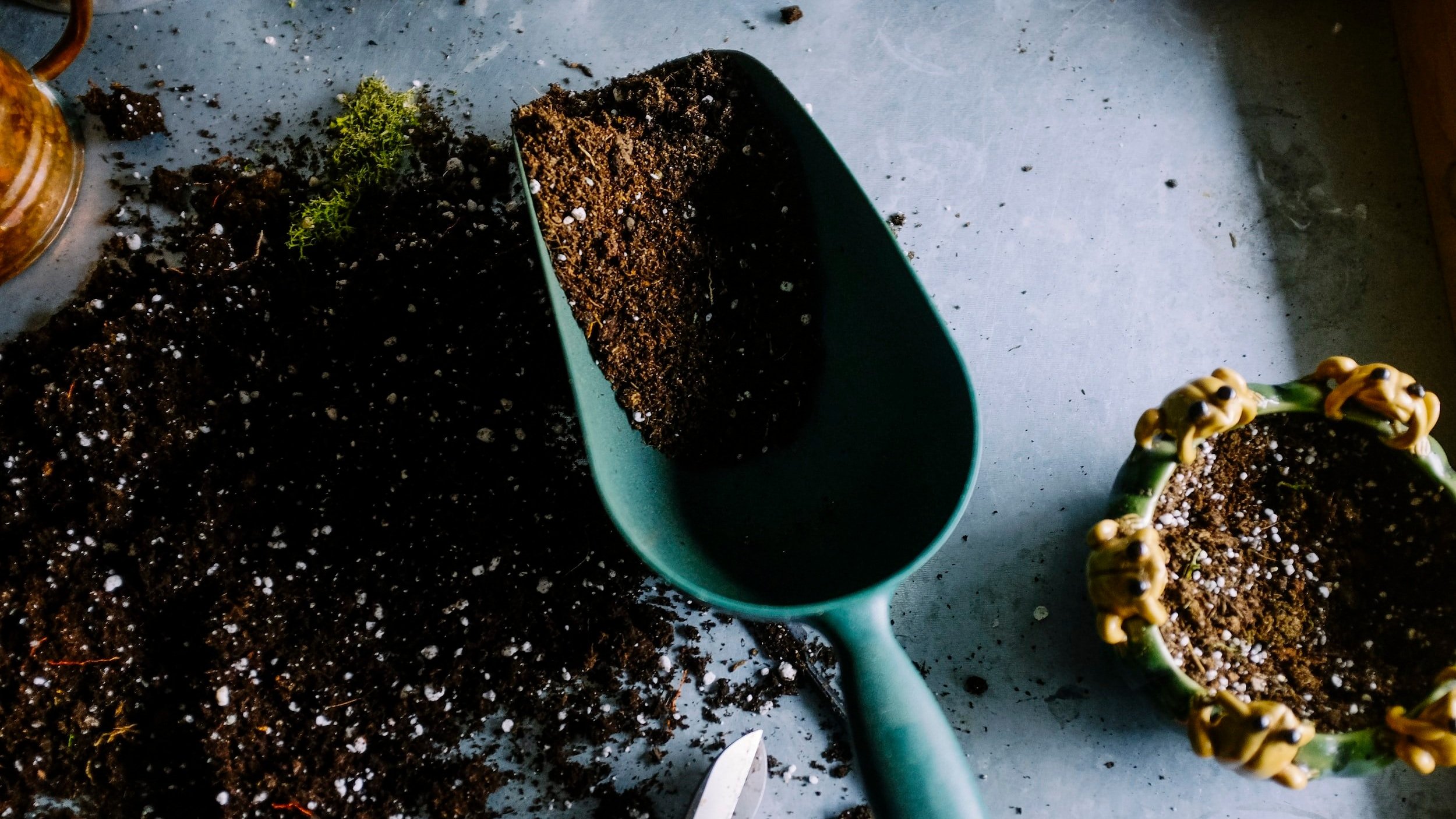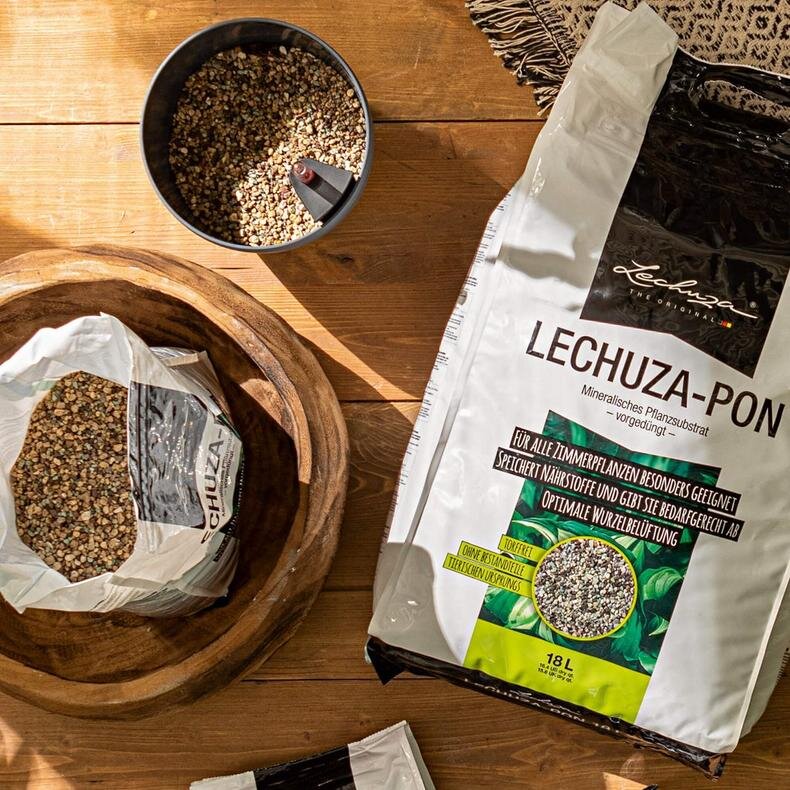An A to Z of houseplant potting mix ingredients
Whether you buy pre-mixed houseplant potting mix over the counter, or mix your own from individual ingredients, it’s important to know what substrates are out there. This blogpost sprang from three episodes of my houseplant podcast On The Ledge, breaking down a variety of substrates with my guest Nikolic Vladan, aka Mr Houseplant. You can listen to the podcast episodes here:
New products are entering the market all the time, so I’ll be keeping this A-Z updated as I come across new substrates, information and tips - the latest edition is Fluval Stratum.
A is for AKADAMA a clay-based granular material often used by bonsai enthusiasts. There’s a really detailed description of the pros and cons of this ingredient on the website Bonsai Empire.
B is for BARK Chunks of fir or pine bark, in various sizes from fine to coarse. Popular as orchid substrates, and the larger the roots, the more coarse (large lumps) the bark will be.
B is for BASIC SLAG I saw this mentioned in vintage Epiphyllum book Fine-Flowered Cacti by FR McQuown, as a substance to dust cuttings. It’s a lime-rich byproduct of steel production that was in the past used as a fertiliser, and still seems to be available although not in your average garden centre.
C is for CAT LITTER perhaps surprisingly, cat litter is popular in cactus and succulent growingn cirlces as a substitute for grit or perlite. You need to get the right one though - a non-clumping type made from moler or calcined clay. The two brands that seem to be most popular in the Uk for this purpose are Tesco’s low dust cat litter and Sanicat Pink. Here’s how Desert Plants of Avalon uses it.
C is for CHARCOAL Activated charcoal sold as pellets is most cheaply available at aquarium supply shops, where it’s used for filters, but it’s also sold in houseplant shops as horticultural charcoal, such as this Biology Blend from Biochar. In houseplant terms, it can be used as a way of increasing soil porosity.
C is for COIR Coir is made from the husk of coconuts and can be added to potting mixes, often as a replacement for peat: in fact it is often seen as a more sustainable option to peat. It often comes in lightweight compressed blocks, so transport/delivery costs are low, plus it is ideal if you lack storage for potting mateirals. It is not without its environmental costs, however, as the production process is resource-intensive and can damage local water supplies. Always check the provenance of your coir - Fertile Fibre is a responsible supplier in the UK, and check out Epic Gardening’s coir guide for suggestions for US suppliers. Coir contains no nutrients, so remember to feed plants regularly.
D is for DIATOMACEOUS EARTH Also known as DE. A silicon rich substance made form a sedimentary rock created bu the bodies of millions of fossilised algae. The food grade DE is hard to work with as it’s so fine, so look for the granular form instead. Here are the DE slug pellets I mention.
F is for FLUVAL STRATUM This substrate is marketed as an aquarium substrate and is a volcanic soil extracted from Mt Aso in Japan. It’s dark in colour and highly porous, which has meant that houseplant growers have started using it as a substrate in prop boxes and as a mineral substate in the same vein as leca and pon. You can read about this product on the Fluval website.
G is for GRIT Crushed granite or limestone chips usually 1-6mm in diameter, washed to remove excess lime and provide a suitable pH for houseplants (which mostly enjoy a pH of 6.5-7). I use it as a pot mulch on succulents and also mix it into potting mixes for plants that like sharp drainage.
J is for JOHN INNES A complete soil-based potting mix formulation concocted in the 1930s after extensive research at the John Innes Centre in the UK. John Innes no 2 is usually the formulation recommended for houseplants: check out this useful guide on John Innes composts from the RHS for more details. Check the small print, as there’s no established standard for John Innes, and many still contain peat.
L is for LEAF MOULD Leaf mould is made of slowly decomposed leaves and can be added to potting mixes for woodland plants such as ferns. If you make your own (instructions for that are here) be aware you may end up importing worms, woodlice and springtails to your pots.
L is for LECA Leca stands for lightweight expanded clay aggregate, a really useful addition to potting mixes that need to be airy, for instance for epiphytes. I use it at the bottom of cachepots to soak up water, and as a fungus-gnat defying mulch. You can also grow plants in pure leca: more on that in an upcoming episode!
P is for PEAT Peat is a non-renewable resource, and takes millions of years to form: National Geographic has called it “the forgotten fossil fuel”. Listen to episode 103, my sustainability special on peat for more information on why we shouldn’t be using peat in our houseplant potting mixes, or anywhere else in the garden.
P is for PERLITE This is another non-renewable source - volcanic glass that’s mined from the ground and heated so it expands: views over its sustainability vary. The perlite industry claims it has good eco-credentials but a lot of energy goes into its production. I’ve been looking for more sustainable alternatives, including rice husks. These work well for some plants but they break down too quickly to be of use for cacti and succulents. I’m also starting to explore Growstone as an alternative: it’s made of 100% recycled glass, and this article suggests it has shown good results.
P is for PON Ponis a mineral based (ie soil-free and inorganic) substrate. Lechuza are best known for making pon, and their pon is made of four ingredients: zeolite, bims (aka pumice), lava rock and slow release fertiliser granules. There are different ways of using this substrate as a standalone, or in conjunction with soil, in what are called semi hydroponic or hydroponic systems. Listen to an interview with Arvin Bhudia of Lechuza Pon about their pon products in On The Ledge episode 198.
P is for PUMICE This volcanic rock makes a good alternative to perlite, and may be considered more sustainable as it is available at the surface rather than being mined, plus it does not have to be heated to high temperatures during processing. It is lightweight and does not float to the surface like perlite but it is generally more expensive than perlite.
S is for SAND Sand seems to garner differing opinions among growers: some routinely use it in their mixes as a way of aiding drainage, but others find it to too heavy. Very fine sand (less than 1mm diameter) is best avoided as it can solidify in the pot and do the opposite of improving drainage! Always use horticultural sand as builders’ sand has too much lime in it for houseplants. Sand is useful for heated propagation benches like this, and for mixing with fine seed when sowing.
V is for VERMICULITE Vermiculite is a mineral that makes a useful additive to potting mixes, aiding aeration and holding water. from the Latin ‘vermiculare’ meaning ‘to breed worms’ owing the wormlike shape of the vermiculite as is ‘exfoliates’ under extreme temperatures. Check out my episode with Bob Potter for more on using 100% pumice as a substrate for succulents.
W is for WORMCASTS Worm poo is powerful stuff, containing organic material (humus), nutrients and beneficial bacteria. It’s best to buy screened wormcasts from a reputable supplier to avoid introducing any worm or slug eggs, or any pathogens, to your houseplants. It’s a useful addition to the pots of hungry plants such as aroids, but be sparing as it’s powerful stuff!
Got suggestions for additions? Drop me a line to ontheledgepodcast@gmail.com.

